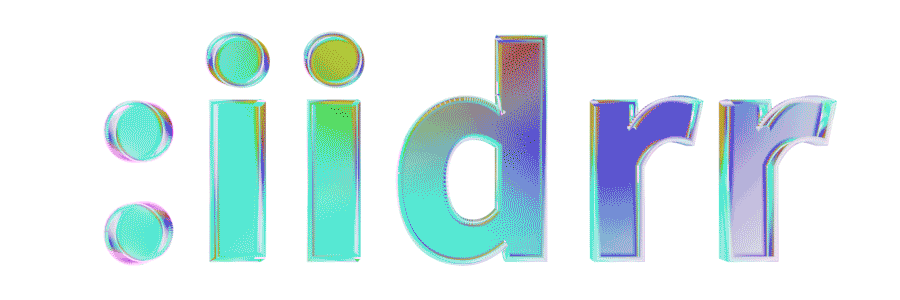Constructing the Intangible: Ruoyun Dai’s Vision for Emotion-Driven Design
Oct 30th, 2025 by Shuwan Chen
Ruoyun Dai (www.dairuoyun.com)is a multidisciplinary designer whose work bridges immersive media, interactive design, and contemporary art. She specializes in AR/VR/XR installations, AI-driven product design, and lenticular print innovations, creating hybrid experiences that merge digital and physical storytelling. Her projects have been showcased at major international exhibitions, including the San Francisco Art Fair 2025, and recognized internationally with a DNA Paris Design Award Honorable Mention and a Gold Winner title at the MUSE Design Awards. In addition to her role as a Product Designer, she leads 2rt.studio as its Creative Director—a platform that transforms digital art into tangible formats and fosters collaboration with globally recognized artists.
You began in architecture before turning to digital design and immersive art. Can you remember a moment when that shift first became clear to you, when you realized space could become emotional data rather than just structure?
During my final year in architecture school, I kept running into the same frustration: so many of my ideas collapsed under technical constraints. There were concepts I loved, but structurally or materially they simply couldn’t exist in the real world. That was the moment I started wondering what would happen if design didn’t have to stop at physical limitations.
I became curious about how technology could extend design beyond “what can be built” into “what can be experienced.” Digital tools opened the possibility to create moments that feel almost impossible, like scenes you only find in novels or dreams.
I’ve always believed a designer’s role is to give form to human imagination through history. When I shifted into digital design and immersive art, it felt like stepping into a space where imagination didn’t have to shrink to fit the rules of gravity or material physics. It could finally expand.
When you started 2rt.studio, it wasn’t just a design label. It felt like building missing infrastructure for digital artists. Was there a specific experience or conversation that made you realize how invisible digital art still was in the physical art market?
When I started 2rt.studio, it came from noticing a persistent gap. Many digital artists around me were producing work that was imaginative, emotional, and technically advanced, yet the pieces stayed almost entirely inside screens. They were appreciated in festivals or museums but rarely entered the part of the art world where works are collected and given long term value.
After looking deeper, I realized it was not a creativity problem at all. It was an infrastructure problem. Digital art simply did not have a clear pathway into the physical market. There was no system that helped artists translate their work into something that could be owned, displayed, or circulated.
2rt.studio began as an attempt to build that missing bridge. I wanted digital art to have a structure where its value could move and be recognized, instead of remaining locked in virtual spaces.
Your lenticular works use up to 56 frames, which is rare in fine art. What did it take to push that medium beyond its commercial roots, and how do you decide when an image moves just right?
My lenticular work started from a desire to give digital motion a physical presence without losing its emotional nuance. Because lenticular printing is often treated as a commercial medium, pushing it into fine art meant reworking everything from the frame count to how the lens interacts with light and depth. Using up to 56 frames came from building a workflow that allowed the motion to feel soft and perceptual rather than graphic or abrupt.
During development, we ran countless tests: motion speed, color shifts, the direction of movement, and how different sequences behaved under the lens. Every small parameter changes the emotional rhythm of the image. I know a piece moves correctly when the transition feels like a natural breath, when the viewer stops noticing the mechanics and instead feels the image shift like a memory coming into focus.
In Dream Complex you combine AR, data, and dream psychology. How did you translate something as private as emotion into a system that viewers could actually feel through technology?
Dream Complex is a project that combines AR technology with physical models to build a spatial narrative of dreams. It uses a three dimensional coordinate system to classify dreams according to the type of emotion, the intensity of that emotion, and the level of consciousness involved.
By layering AR over physical structures, the project turns these classifications into a visual and spatial experience. Viewers can move through different emotional coordinates, watching the environment shift in response to their position. The aim is to explore subconscious meanings through storytelling, using psychology as a foundation to enhance self awareness and link dream states to real life experiences. In that sense, Dream Complex becomes more than an artwork. It becomes a gentle therapeutic tool, helping people understand themselves through the architecture of their own subconscious.
At the San Francisco Art Fair and Art on Paper you worked with artists like Meltem Şahin and Jiayue Li. What does that collaboration look like in practice? Are you more of a translator, a director, or an engineer of other people’s visions?
Working with artists like Meltem Şahin and Jiayue is very hands-on for me. In these collaborations I act as a director, a prototyper, and a curator. Before anything begins, I review and filter their artworks to identify which pieces have the right qualities for lenticular transformation. Not every digital work can translate well, so this first curatorial step is essential.
Once we choose the candidates, I lead the prototyping process. I run motion tests, color and depth studies, and lens experiments to understand how the work behaves physically. These prototypes go through several iterations, because lenticular animation requires precise timing, direction, and emotional rhythm. Only after the tests feel right do we move into the second stage of creative development, where the artwork is reshaped for its final form.
In that sense, my role is to guide the work through translation: selecting, directing, prototyping, and curating it into a version that can live meaningfully in a physical art context.
You’ve also built partnerships with iidrr Gallery, Freepik, and City X. Can you share one example where a collaboration unexpectedly changed how people understood lenticular or digital-physical art?
One moment that surprised me was our collaboration with City X, where we installed a series of lenticular pieces inside a space usually focused on fashion and urban culture rather than traditional art. Visitors who had never encountered lenticular before kept returning to the works from different angles, trying to understand why the images felt alive. Many of them told us it was the first time they realized digital motion could exist without a screen, and that physical art could behave like animation. That collaboration shifted people’s expectations of what “digital” can look like in the real world, and it showed me how powerful the digital-physical crossover becomes when it appears in unexpected environments.
You’ve received recognition from Red Dot, MUSE, and AIGA among others. Was there a specific project or moment when you felt your work began to be taken seriously by the international design community?
The turning point for me was Dream Complex. When it received recognition from Red Dot and MUSE, I felt a shift in how the international design community viewed my work. It was the first time a project that blended psychology, AR, and spatial storytelling was acknowledged on a global stage, and it signaled that the industry was starting to take digital-physical experimentation seriously. That moment made me realize my work was no longer seen as niche experimentation but as a contribution to the broader conversation about where design and new media can go.
Visitors spent unusually long inside Dream Complex during its exhibition. What did you observe in those reactions that told you the work was connecting on a psychological level rather than just visually?
What struck me most was how quiet people became inside Dream Complex. Instead of looking at the visuals and moving on, they slowed down, changed their pace, and started testing how the environment reacted to them. Some people walked back and forth in the same spot for several minutes, others stood still and simply breathed with the shifting colors and motion. A few even told me afterward that the space reminded them of a specific dream or feeling they had not thought about in years. Those behaviors showed me the work was tapping into something internal. It was not spectacle, it was recognition, the moment when the viewer realized the installation was mirroring an emotion rather than showing an image.
You’re developing software tools that let artists transform digital works into lenticular pieces. What is your long term vision for this platform? Could it become a new kind of production ecosystem for digital creators?
My long term vision is to build a software platform where artists and designers can create lenticular works on their own. Instead of relying on a curator or a technical specialist, they would be able to upload their digital pieces, run motion and color prototypes directly in the system, and generate files ready for production. I want lenticular printing to function as an accessible service rather than a closed process, something that gives digital creators a new way to bring their work into the physical world. Over time, I see this becoming a full production ecosystem where digital artists can experiment, iterate, and transform their ideas into collectible physical pieces with the same ease they publish work online.
You often talk about using design to strengthen emotional understanding. If your research were applied beyond art, perhaps in mental health or education, what would that look like?
Mental health is something people often feel but cannot see, measure, or visualize, which is why I believe design can play a meaningful role beyond art. If my research were applied in mental health or education, it would focus on turning invisible emotional states into forms people can understand and interact with. That could mean creating tools that map emotional patterns over time, or building visual systems that help individuals recognize shifts in mood, stress, or behavior in a more intuitive way. The goal would not be to diagnose but to give people a clearer sense of their inner landscape, so they can understand themselves with the same clarity they use to navigate physical space.

